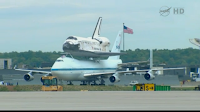Here, follow the link, I can assure you that it is going to be wonderful
http://eol.jsc.nasa.gov/HDEV/
I wish I had a projector, and could project these view while working!!!
Did you say that you want a background music for this view?
Here: https://www.youtube.com/watch?v=lyJwbwWg8uc
https://www.youtube.com/watch?v=lyJwbwWg8uc&list=RDlyJwbwWg8uc
The view would be absolutely amazing if we could catch it when it flies over Aurora.
Head over to spaceweather.com and try to track down one of 'em. Please let me know if there is going to be an Aurora watch!
There are other Alerting sites too, for example:
http://www.gi.alaska.edu/AuroraForecast
https://twitter.com/Aurora_Alerts























